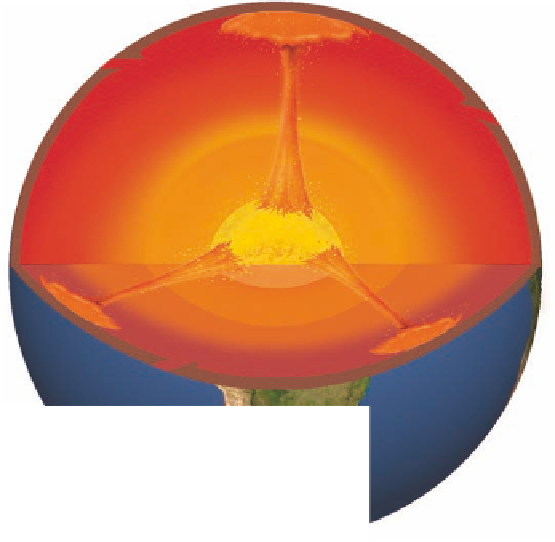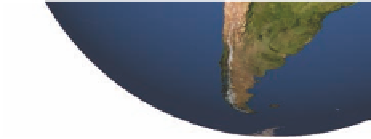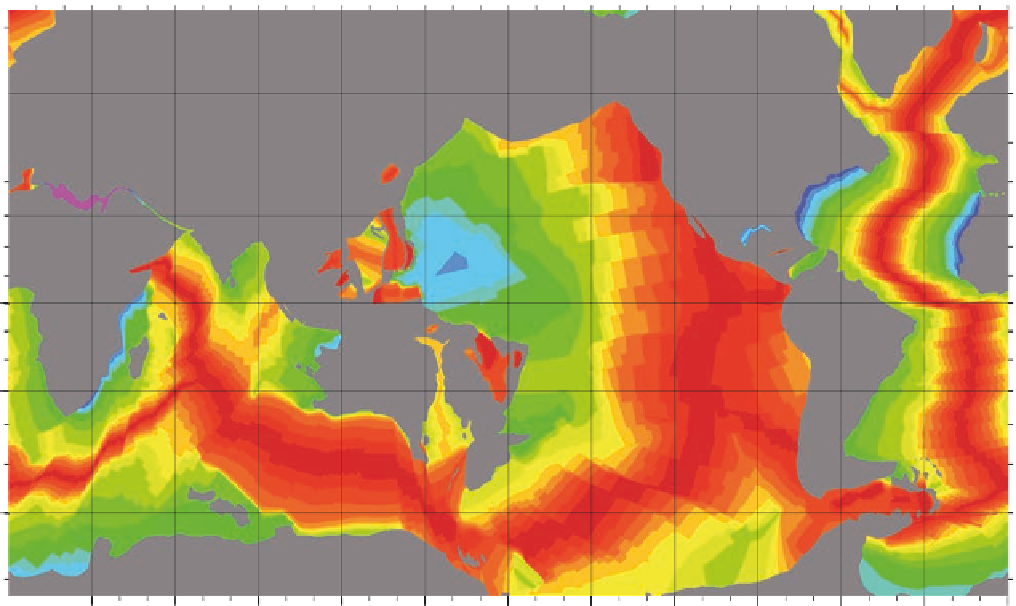Geoscience Reference
In-Depth Information
How do we know that the plates are moving? For one thing,
scientists can now measure the motion through remote sens-
ing and Global Positioning Systems discussed in Chapter 2.
In California, for example, sensors placed on either side of
major faults demonstrably move relative to one another over
the course of time, indicating that the underlying plates are
shifting. Evidence of plate movement also appears in the age
of the seafloor. Convection in the mantle brings magma up
through fractures in the crust, where it extrudes onto the sea-
floor, cools, and forms new oceanic crust. Figure 13.4 shows
isochrons (lines of equal age) for the ocean floors around the
world and clearly indicates areas where oceanic plates have
been spreading apart. Notice that the oldest part of the oce-
anic crust in the Atlantic Ocean basin is along the east coast
of North America, where it is about 180 million years old. In
contrast, the seafloor in the center of the Atlantic Ocean is
less than 10 million years old. This age geography supports
the theory that new rocks are being constructed in the center
of the ocean basin and are gradually spreading away from
there. An additional piece of evidence supporting the theory
of continental drift is that magnetic stripes run parallel to the
Mid-Atlantic Ridge across the seafloor in a pattern similar to
the isochrones shown in Figure 13.4. These stripes reflect the
fact that the Earth's magnetic field has periodically reversed
through time, with magnetic north becoming south, and vice
versa. About 800,000 years have passed since the last such
Magma
plume
Convection
cell
Core
Figure 13.3 Convection plumes within Earth.
Magma plumes
rise from deep within Earth and spread apart at the crust. Rock
created as the magma cools subsequently sinks back into the
mantle, where it melts again.
60° N
30° N
0°
30° S
60° S
0°
30° E
60° E
90° E
120° E
150° E
180°
150° W
120° W
90° W
60° W
30° W
0°
Figure 13.4 Seafloor ages.
In this map colors are associated with seafloors, whereas the continents are gray. Notice how the
youngest seafloor rocks (in red) occur in the zones of seafloor spreading, such as in the Atlantic Ocean, with progressively older
rocks (yellows, greens, and blues, respectively) away from these regions.





























































































































































































































































































































































































































































































































































































































































































































































































































































































































































































































































































































































































































































































































































































































































































































































































































































































































































































































































































































































































































































































































































































































































































































































































































































































































































































































































































































































































